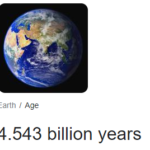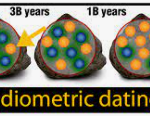Physical Geography Definition
Before going to the definition of physical geography, let’s have a brief introduction to Geography and its branches. Geography is a branch of natural science, devoted to the study of the lands, features, inhabitants, and phenomena of Earth. Geography is an all-encompassing discipline that seeks an understanding of Earth and its human and natural complexities—not merely where objects are, but also how they have changed and come to be.
Geography Can be divided into two main sub-fields: (i) physical geography, and (ii) human geography
- Physical Geography: The natural features and processes of the earth are studied under this branch. Physical features may include landforms, climate, weather, and ecosystems, while the physical processes may include the forces that affect these features and shape the planet’s surface. Physical geographers study phenomena like plate tectonics, erosion, climate change, and natural disasters.
- Human Geography: In human geography, we discuss the mutual influence of human activities and physical/natural features and processes of the earth. It includes topics of population, migration, urbanization, cultural landscapes, economic activities, rural and urban development, and political boundaries. Human geographers examine how people interact with and shape the spaces in which they live.
Physical Geography
Physical geography is concerned with the natural features of the earth and processes associated with it. The natural features mean, the landforms, weather, climate, ecosystem, composition, vegetation, and resources of the earth. The earth’s processes include all those natural and artificial forces and activities, that either affect the earth’s features or are affected by the Earth’s features. Processes may include plate tectonic movement, volcanism, weathering/erosion, climate change, and natural disasters, etc.
What We Study in Physical Geography
Physical geography is a fundamental subfield of geography that focuses on all the natural features and processes of the Earth’s interior and surface. The study covers a wide range of aspects and topics, including:
Study of Landforms: In Physical geography, the foremost thing we study is the Earth’s landforms. Landform means external features of the earth. For example mountains, hills, valleys, rivers, streams, plains, deserts, coasts, sea basins, faults, glaciers, and volcanic landforms, etc.
Evaluation of Climate and Weather: In physical geography, we study the climate and weather of a region under study. Climate and weather of a particular region is an important aspect of physical geography. It includes atmospheric conditions, climatic patterns, weather systems, and their impact on Earth’s physical features. We also study the impact of Earth’s features on the climatic and weather conditions, and how changes in the Earth’s features affect the climate and weather.
Geolocational Study of Living Things: Biogeography is an interaction between living organisms and Earth’s system. In biogeography we examine the geographical distribution of plants, animals, and ecosystems across the planet, considering factors like climate, geography, and historical processes that influence species ranges.
Study of Soils: Pedology is a branch of Earth sciences, in which we study the composition and nature of soil and its suitability for agriculture. In geography, we study soil only with geographical context. How the soil of one region differs from that of the other. How the geographic features of a region affect the soil, and what makes the soil of a region suitable for a specific type of crop, and the other not.
Study of Water: We study the quality, movement, and distribution of water in physical geography. A branch of geography namely Hydrology is specified with the study of water. Topics like rivers, streams, lakes, surface water, rainfall, groundwater, and aquifers are discussed in this branch of geography. The water cycle is a significant phenomenon, which brings into effect the distribution of water in different geographical locations.
Study of Earth’s Morphology: A subject of geography namely geomorphology is specified for the evaluation of processes and landforms that shape the Earth’s surface, such as erosion, sedimentation, and tectonic activity. Changes in Earth’s surface brought about by the Earth’s processes are part of geomorphology.
Study of Natural Hazards: A natural disaster is the name of a highly harmful impact on a society or community following a natural hazardous event. Some examples of natural hazard events include flooding, drought, earthquakes, tropical cyclones, lightning, tsunamis, volcanic activity, and wildfires. This aspect involves the study of natural disasters like earthquakes, volcanoes, tsunamis, hurricanes, and wildfires, and their impact on the environment and society.
Study of Oceans and Seas: The study of oceans and seas is known as oceanography. This field of study includes ocean currents, marine ecosystems, coastal processes, and the physical characteristics of the world’s oceans.
Study of Glaciers: Glaciers are the huge deposits of ice on the highlands. A subject of geography devoted to the study of glaciers is known as Glaciology. The study of glaciers and ice formations, focusing on their dynamics, impacts on landscapes, and contributions to sea-level changes very important in Earth sciences.
Study of map: In physical geography, we study maps to represent geographical information. It’s a fundamental tool for geographers to visually communicate spatial data. The field in which we study maps for the representation of geographical information is known as cartography.
Remote Sensing: The use of satellites and other technologies to gather data about the Earth’s surface from a distance is known as remote sensing. The purpose of remote sensing is to aid in monitoring environmental changes.
Study of Biomes and Ecosystems: Physical geography explores the various biomes (habitats for living organisms) and ecosystems on Earth, including rainforests, deserts, grasslands, and forests, to understand their composition and ecological interactions.
Study of Environment: This aspect examines human impacts on the environment, such as pollution, global warming, deforestation, urbanization, and resource depletion.
Geographical Information Systems (GIS): GIS is a technology used to analyze and visualize geographic data, making it easier to study and manage various aspects of physical geography.
Geographical Modeling: In order to make geographical features more understandable, and comprehensible, modeling techniques are employed in order to simulate and predict processes in physical geography, such as climate modeling or ecosystem dynamics.
These aspects of physical geography are interconnected and contribute to a holistic understanding of the Earth’s natural environment and its interactions with human activities.


Leave a Reply